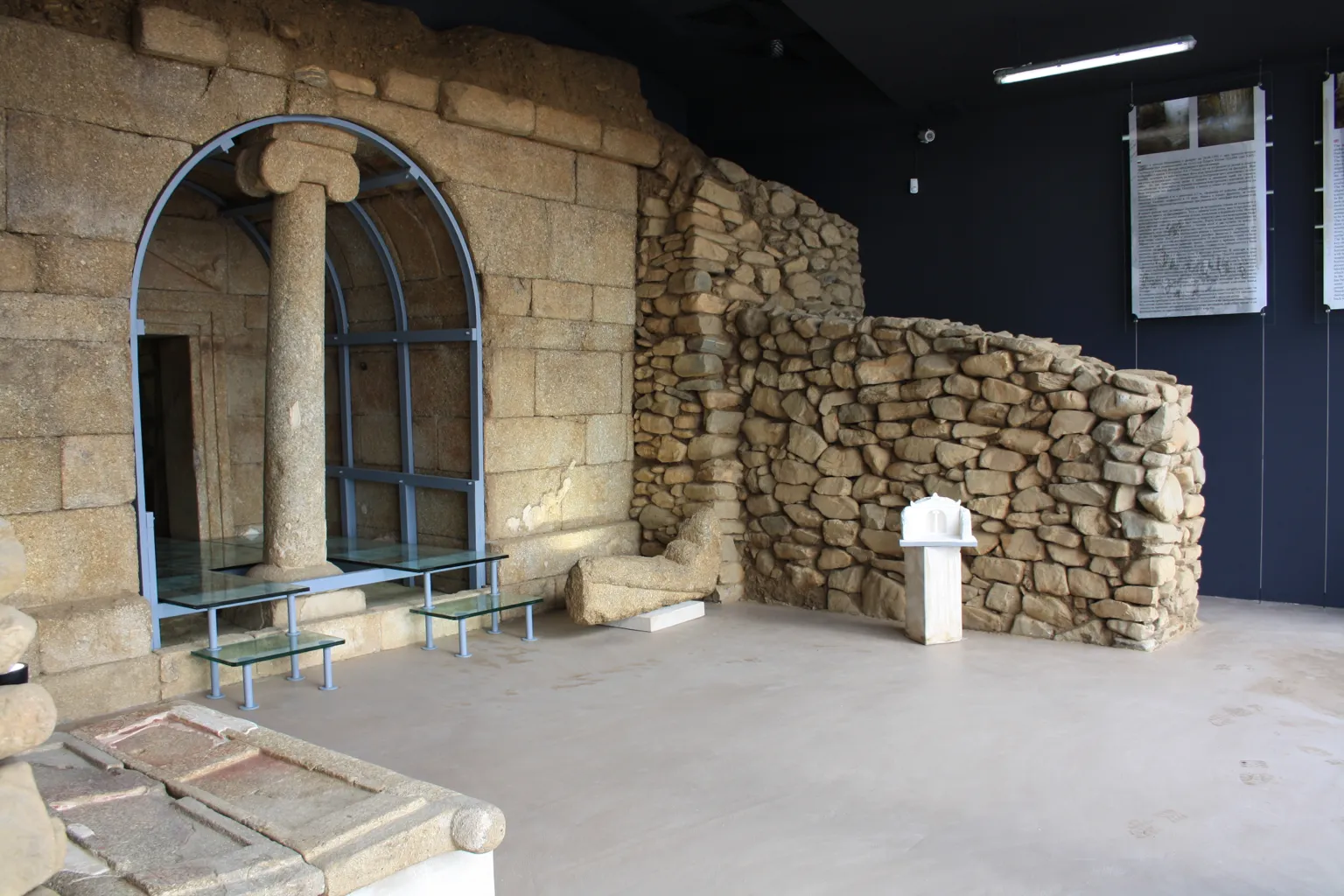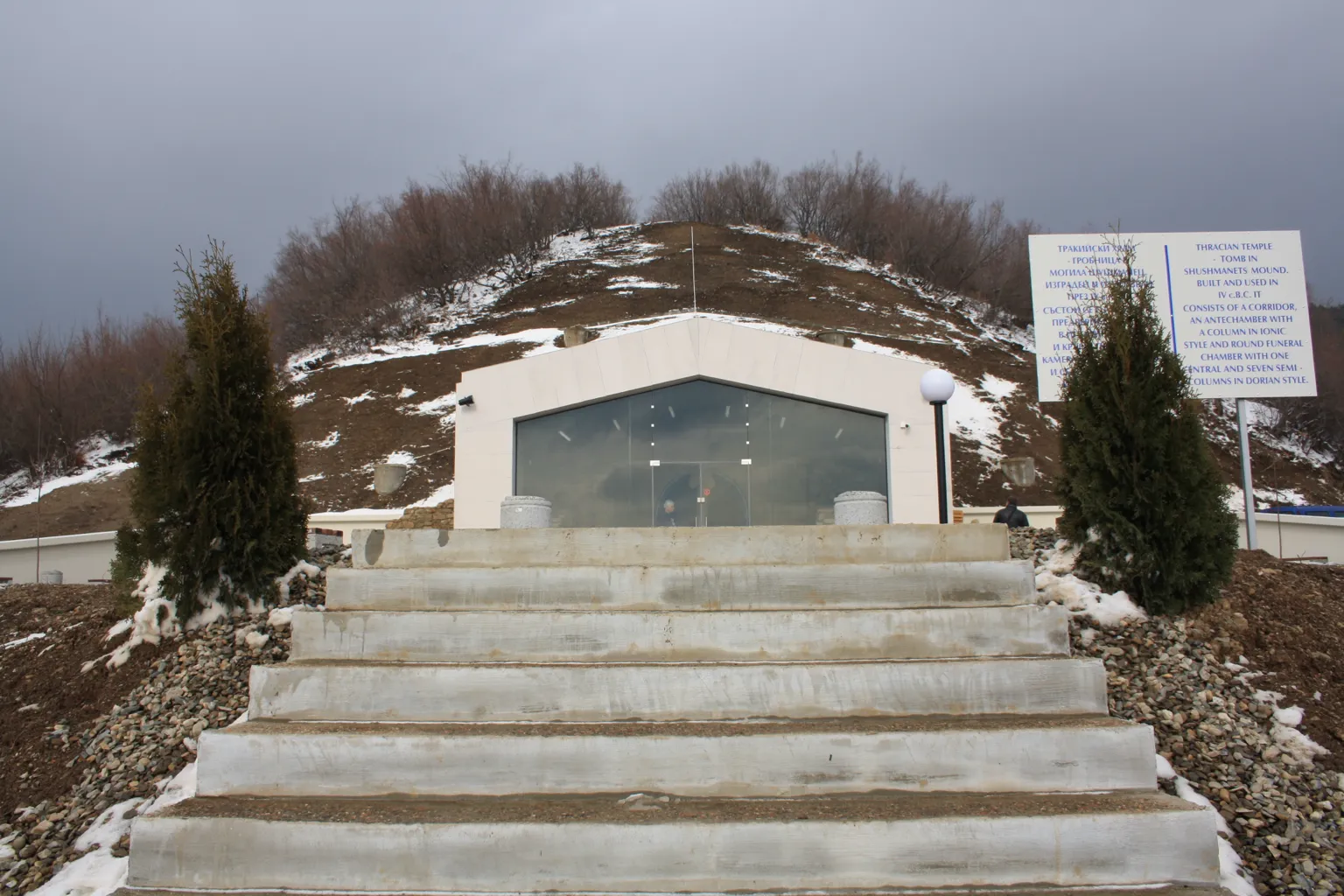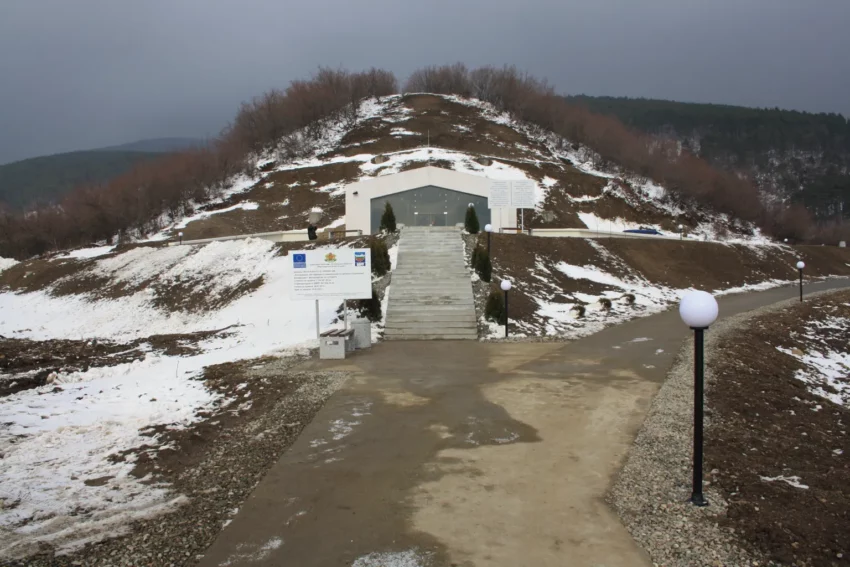The Thracian tomb at Shushmanets sits in the Valley of the Thracian Rulers. Built in the 4th century BC, it started as a temple and later became a tomb.
Get your dose of History via Email
Unique Architecture
The temple features a long, wide entry corridor. An antechamber follows, with a semi-cylindrical room supported by an elegant column. This column’s top resembles a knucklebone. Four horses and two dogs were sacrificed in this antechamber.
The central room is circular, supported by a polished Doric column. This column ends with a large disc symbolizing the sun. These columns represent Thracian beliefs about the universe and creation myths. Archaeologist Georgi Kitov discovered the tomb in 1996.

Location of the Tomb
You can find the mound near the town of Shipka. This proximity makes it accessible for visitors.
Detailed Description
Shushmanets stands as a masterpiece of Thracian architecture. The burial chamber is a tholos with vertical walls and seven Doric columns. Above these columns is an architrave, and above that, a dome. The design features 15 radial blocks resting on the central Doric column.
Each half-column has a modeled pilaster above it. The entrance to the chamber has an Ionic doorframe with a pediment adorned with palmettes. A rectangular vestibule with a cantilevered vault leads to the burial chamber. The vestibule’s facade once had a pediment supported by an Ionic column. Only a fragment remains today.
Walls built from rough-hewn blocks flank the facade. The chamber’s columns, walls, and floor had a thin lime plaster layer, now mostly gone. Researchers identified three plaster layers, indicating at least three construction periods.

Limited Inventory
Apart from the sacrificed animals, no other inventory has been documented. Georgi Kitov suggests the tomb was built in the late 5th century BC and used in the 4th century BC.
Preservation Efforts
Since 2013, the Thracian temple has been open to visitors. This followed a successful restoration project by the Ministry of Culture. The project aimed at restoration and socialization, ensuring the site’s preservation for future generations.
Sources: Wikipedia

